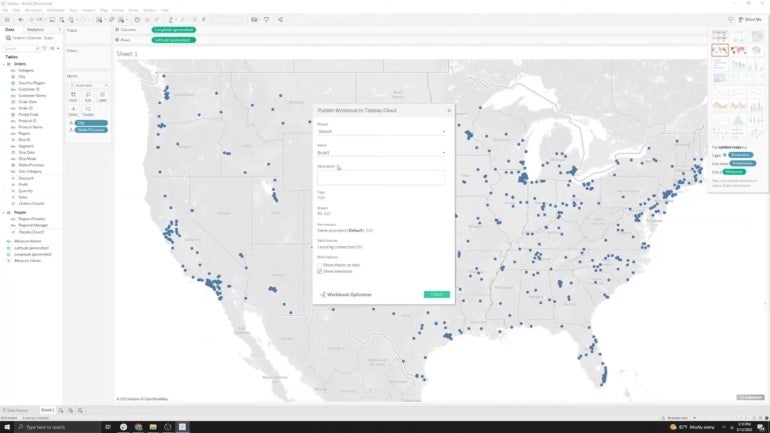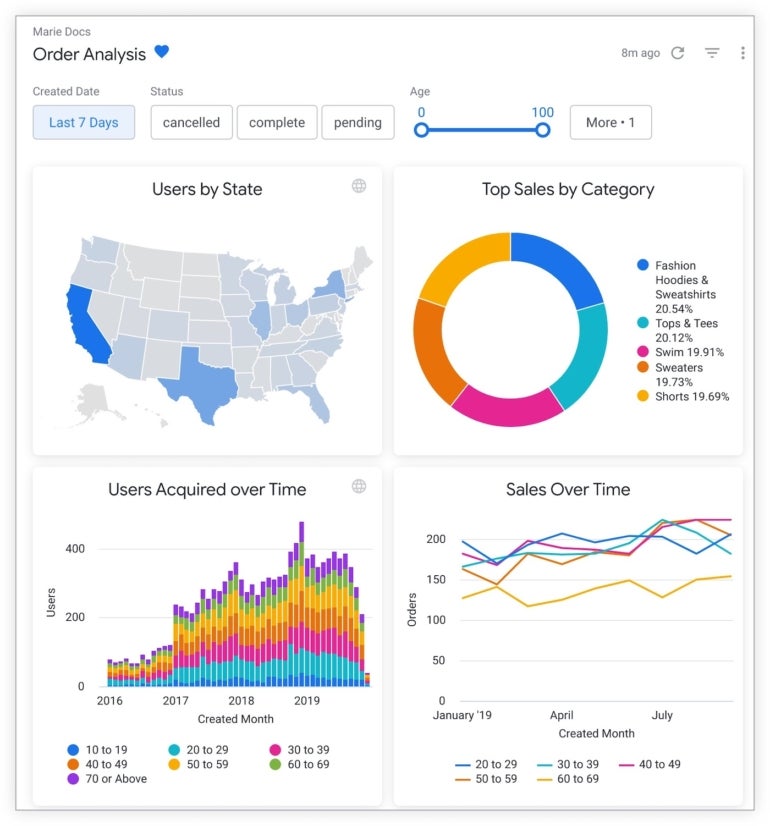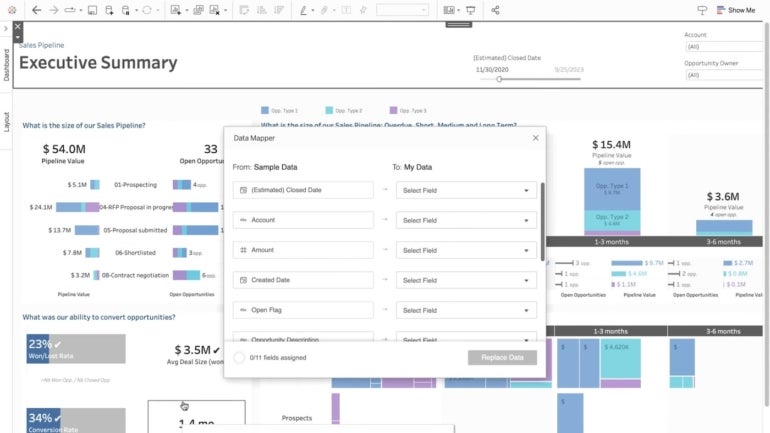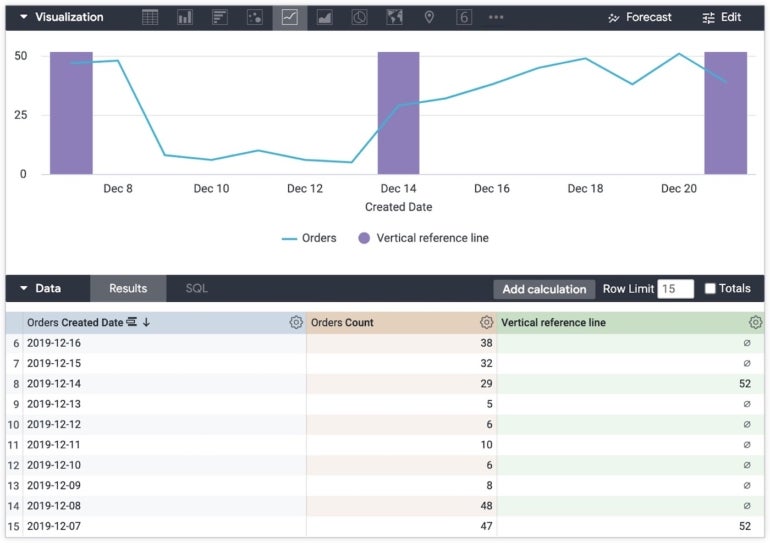
Choosing the right BI tool for your needs requires thorough consideration of features and capabilities. See which of these two top-notch solutions, Looker and Tableau, might be a good fit for your organization.
Looker and Tableau are both robust business intelligence tools. But which should you choose for your organization? Each solution will import data from multiple sources, provide in-depth BI analysis and produce rich data visualizations. However, Looker can provide more and ease-of-use functionality, whereas Tableau digs a little deeper into large and complex data sets.
The two products are highly rated BI software, frequently praised for their security, technical support and agility. Let’s compare Looker and Tableau to determine which would be best for your organization.
Jump to:
Looker is a popular, easy-to-use BI analytics dashboard. Employees can create and share views to dig deeper into the performance of their organization. Looker is owned by Google and is offered at a monthly flat rate per company.
Tableau is a data visualization suite primarily used for business intelligence and analytics. Through Tableau, organizations can customize and optimize how they interact with their data. Tableau is currently owned by Salesforce and is offered as a monthly per-user subscription.
| Features | Looker | Tableau |
|---|---|---|
| Starting price | $5,000 per month | $15 per user per month, billed annually |
| 24/7 phone support | No | Yes |
| Proprietary language | Yes | No |
| Analytics dashboards | Yes | Yes |
| Data refresh | Every hour | Scheduled |
| Infrastructure | Cloud | Desktop and cloud |
| Modifications | Modeling language | Guided story |
Starting at $5,000 per month, Looker can be substantially more costly for smaller companies. As such, Looker is ideal for larger companies that want to remain scalable. By comparison, Tableau’s Creator solution starts at $70 per user, making it ideal for smaller businesses.
Looker pricing is determined by two main factors: the platform pricing cost to run a Looker instance and the user pricing cost for licensing individual users to access the Looker platform.
Looker offers three platform editions:
User license pricing is consistent across each edition.
Tableau’s Creator edition enables users to govern their solution, interact with the software, collaborate through the system and author works based on their datasets. In addition, Tableau offers its Explorer and Virtual editions with limited capabilities.
Figure A
Tableau imports structured and unstructured data to build elegant, human-readable visualizations. Looker likewise provides creatable dashboards with rich visualizations for imported data, which users then customize to suit their needs.
Figure B

Both are full-featured BI tools that include these features:
Tableau provides advanced data analysis and visualization, but Looker leaves its options exposed and accessible.
Modern companies are crunching increasingly large data sets. How do Looker and Tableau perform when given big data? In most circumstances, they will work with relatively equal effectiveness. Tableau is more effective with extensive data sets, while Looker is more effective than Tableau in a cloud-native environment.
Figure C

Looker provides prebuilt, configurable code blocks. LookML, a proprietary SQL-like language, can be used to further interact with and analyze data. Tableau’s analytics solutions don’t have this additional abstraction layer, making it more complicated to use but ultimately more configurable.
Looker and Tableau both have reliable service and support solutions. Looker leans heavily on online help centers and in-app chats. Tableau provides support through traditional venues, such as a weekday phone line and 24/7 emergency phone support. Both Looker and Tableau have active and vibrant communities and documentation.
Figure D

This is a technical review using compiled literature researched from relevant databases. The information provided within this article is gathered from vendor websites or based on an aggregate of user feedback to ensure a high-quality review.
Neither solution is necessarily better, but Tableau is more complex than Looker. Looker provides extensive user-friendly features, such as Looker Blocks, which make it easier to manage analytics views. However, Tableau offers more opportunities for advanced data analytics and management.
A few critical factors will go into deciding whether you want to use Looker or Tableau as your organization’s go-to BI software.
If your organization wants a fast, easy-to-use system with beautiful data visualizations, Looker is the best option. If your organization is looking for deep data analytics or a cost-effective plan for a small number of people, Tableau is the better BI software.
Domo puts data to work for everyone so they can multiply their impact on the business. Underpinned by a secure data foundation, our cloud-native data experience platform makes data visible and actionable with user-friendly dashboards and apps. Domo helps companies optimize critical business processes at scale and in record time to spark bold curiosity that powers exponential business results.